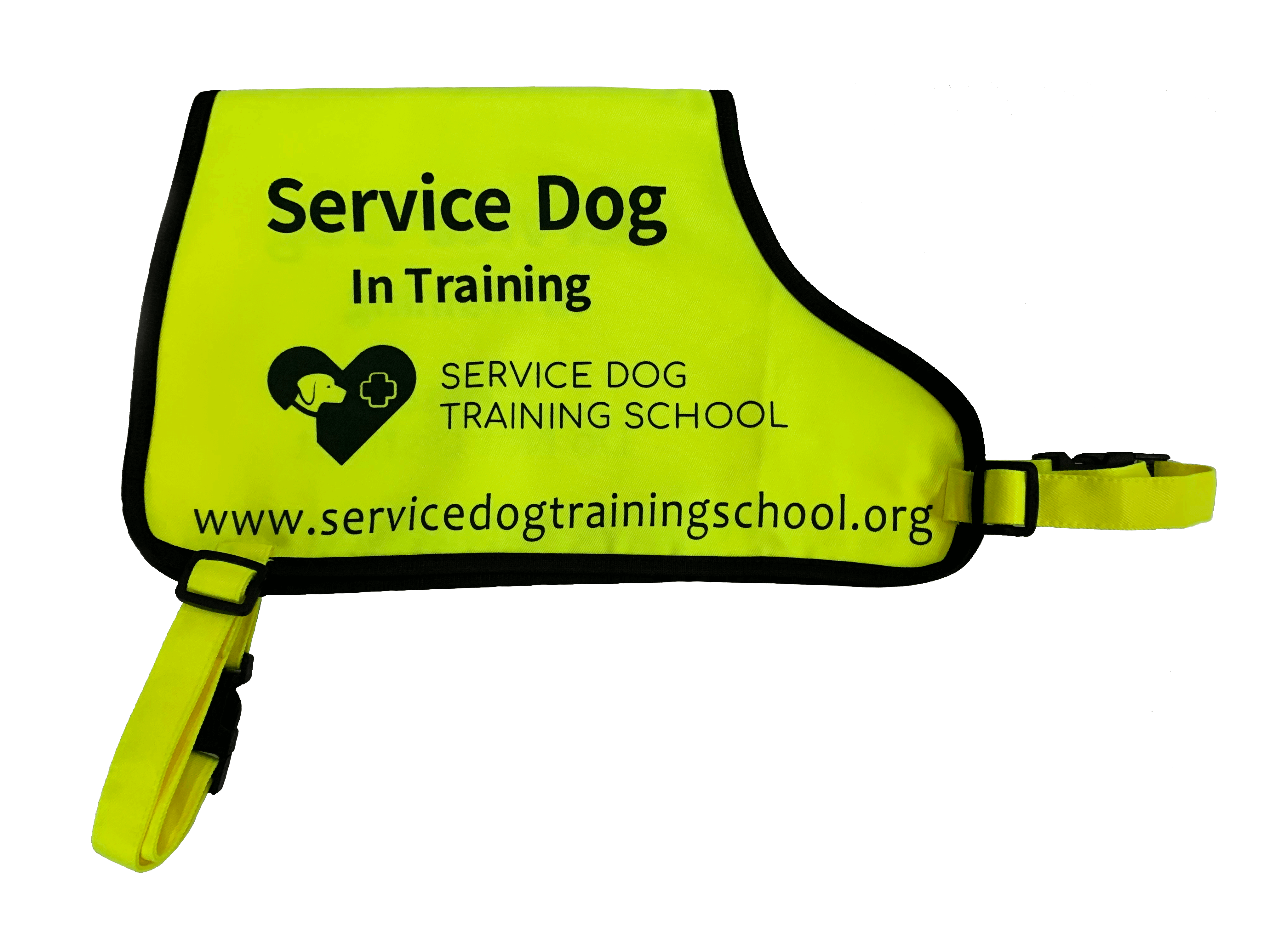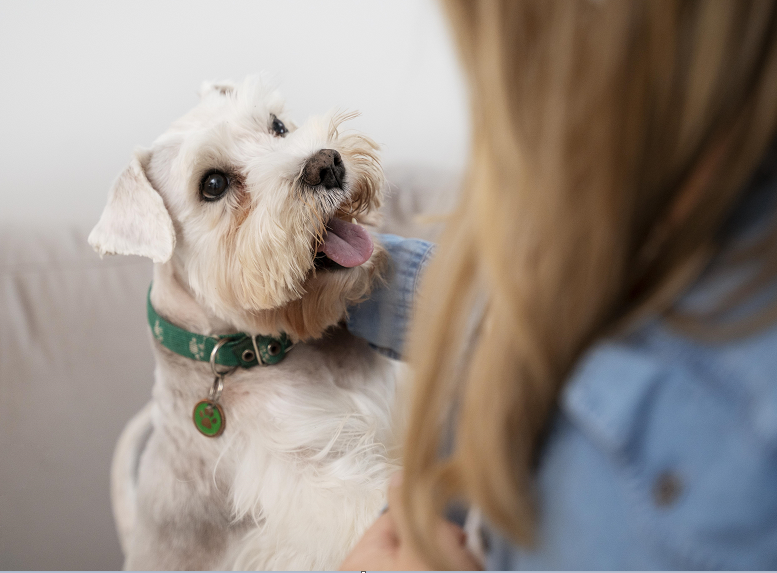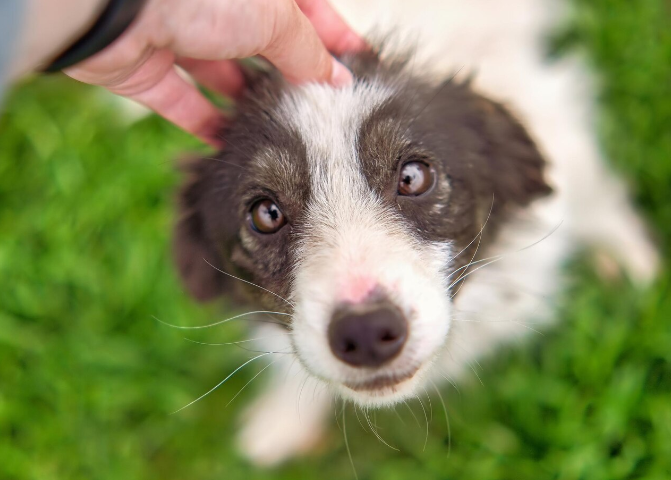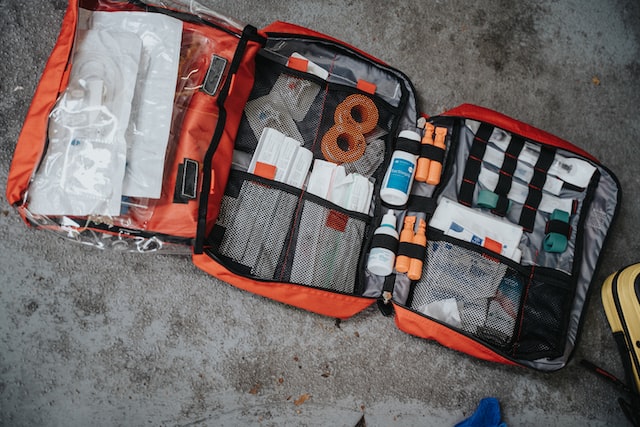
Does your dog need to wear a vest to identify him as a service dog in training?
First, we need to find out if Service Dogs in Training are granted public access in your area as service animals are subject to the requirements of your local service dog law. Thus, to avoid any confrontation in public, you should check your local laws to see if Service Dogs in training (SDit) are covered, before beginning any formal pubic access training.
Under the ADA, it is not a must for service dogs to wear a vest while going out with you. However, whether you dress the service dog in a training vest or training coat depends on your dog's age and training level, where you train with him in public, and primarily on your local laws.
If Service Dogs in Training are not protected by law in your area, then stick to training your dog in places where pet dogs are allowed. For more dog-friendly stores, read Dog-Friendly Store Lists.
So, to wear or not to wear?
Indeed, in areas where Service Dogs in Training are allowed in public places, the Service Dog in Training vest can:
• be an identification showing that he is a working dog;
• make people aware that the service dog is not just a pet dog;
• help eliminate doubts and affirm your rights.
Unfortunately, wearing vests do have some disadvantages that you may want to know:
• The vests may attract attention rather than prevent people from distracting the dogs. Some people may be curious when they see a dog wearing such a vest if they do not know anything about service dogs. They may approach and ask questions or even pet the dog. In this case, the vest may not solve the very problem you are trying to prevent.
• You may throw some money on the vests as the puppies grow, and most pups will chew on them.
• The vests are only needed when your dogs are ready for formal public access and when they are allowed to.
When should you introduce the vest to your dog?
It is vital that your dog feels comfortable in the vest before he starts wearing it in public. To test it, you can put it on for very short periods before and during training sessions at home, and then take it off as soon as the session is finished. If your dog is fearful of wearing a vest or harness, you can try to determine why he refuses it.
Reason 1 He doesn’t like things going over his head or having hands near his face when you put the vest on him.
An easy solution is to find a vest that can be put on without going over the dog’s head. A vest that dogs have to step into or a bandana is a good option.
Reason 2 He has a negative association with wearing the vest.
The only way to help him overcome this obstacle is to use desensitization conditioning. Desensitization is the gradual exposure to situations or stimuli that would bring on the undesirable behavior, but at a level so low that there is no negative response. For example, you can start by putting the vest around your dog’s toys, indicating the vest is as harmless as his toys. The next step is to cover him with small clothes and see if he accepts the wrapping.
Reason 3 He doesn’t want to leave the house.
He knows putting on the vest is the first step to leave the house. In this case, his behavior may be due to the simple fact he is tired and doesn’t feel like walking, or he is afraid to go out.
It would help if you started addressing the problem right away, as performing in public is part of the service dog’s job. There’s always a reason for your dog’s behavior. He is trying to tell you something, and it’s up to you to translate the message. You can also seek help from a professional or your tutor trainer at the Service Dog Training School.
In addition to putting on the Service Dog in Training Vest, there are a few other things to consider:
No.1 Be prepared for questions and distractions.
When you start to train your SDiT in public places, the training vests may attract attention rather than keep people at a distance. People may be curious when they see a dog wearing a vest and come to ask questions or try to pet the dog. When you encounter this problem, you can
• Be prepared for people who approach by using a standard answer that your dog is working. ‘Please do not disturb,’ or ‘my dog is still in training and not ready to greet people yet.’
• Use non-verbal body language to prevent people from interacting with or distracting your dog. Hold your hand up in front of you like a stop sign. Or you can try to step between your dog and the person.
No.2 Necessary public access skills
Regardless of what you call it, your Service Dog in Training needs to have already walked for several minutes at a time and focused on his handler or trainer in order to ignore distractions before working or practicing in public. Also, your Service Dog in Training must be house trained.
Final Consideration
It is vital that your dog feels comfortable in the vest before he starts wearing it in public. And remember, the Service Dog in Training vest is only needed when your dog is ready for public access.














